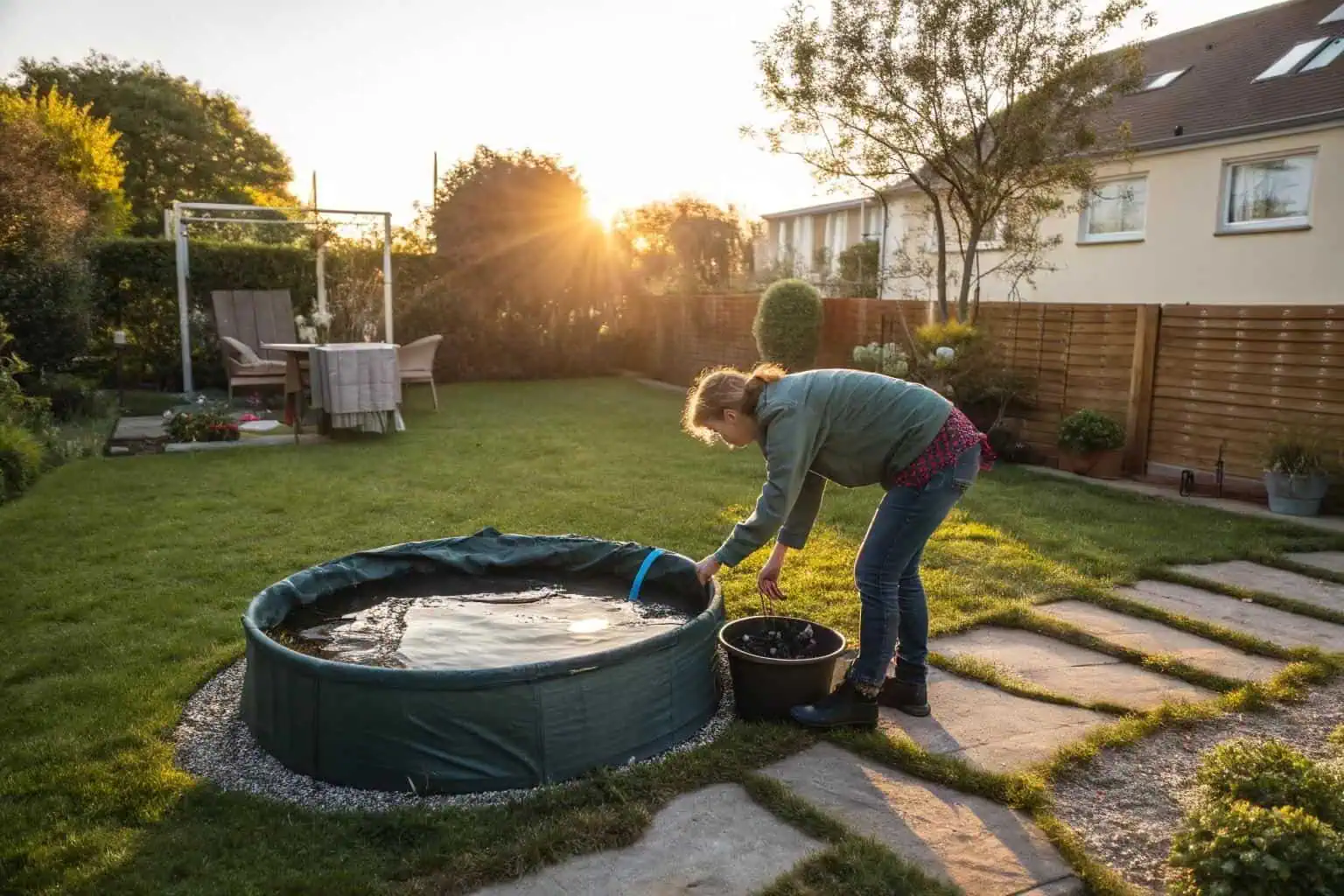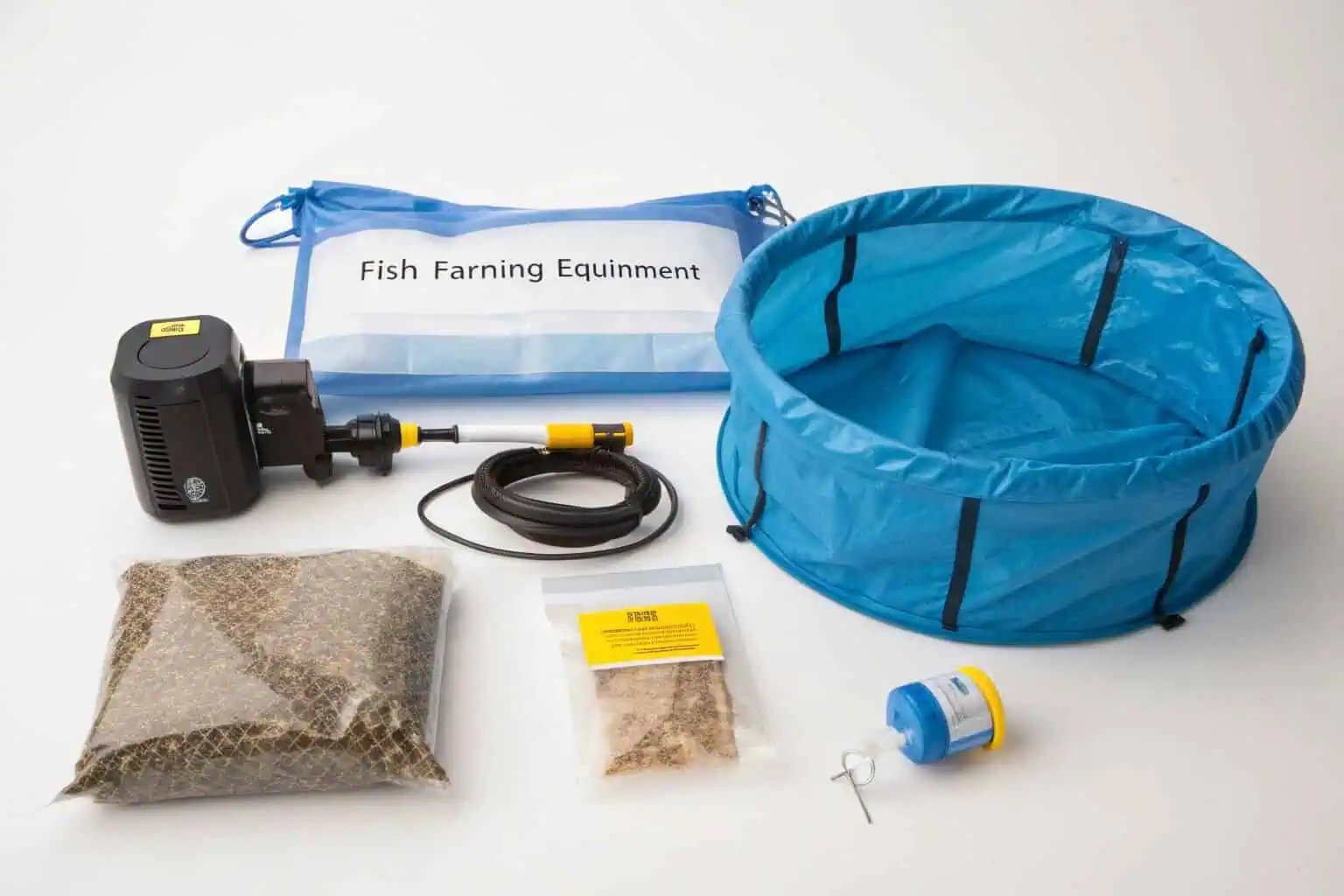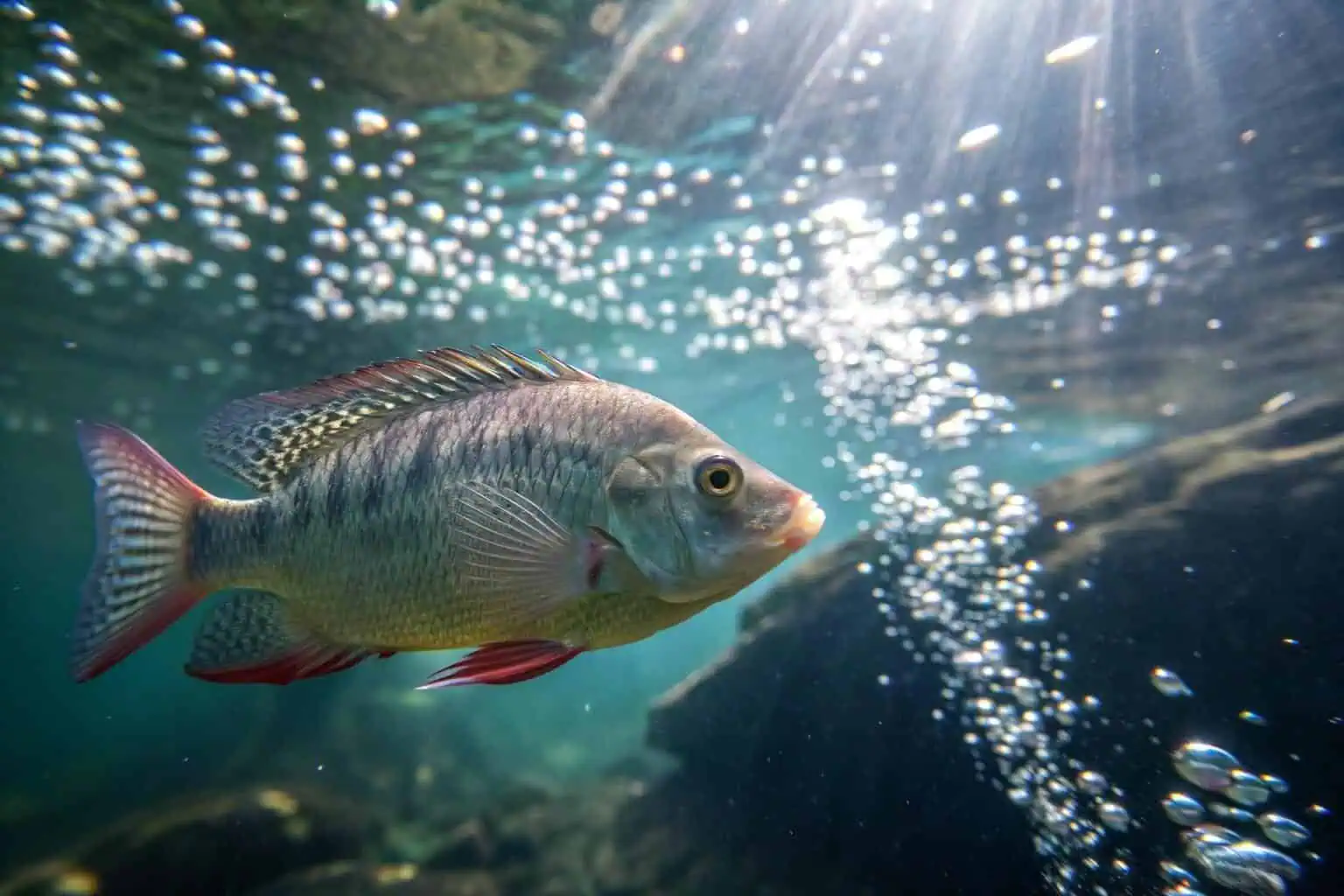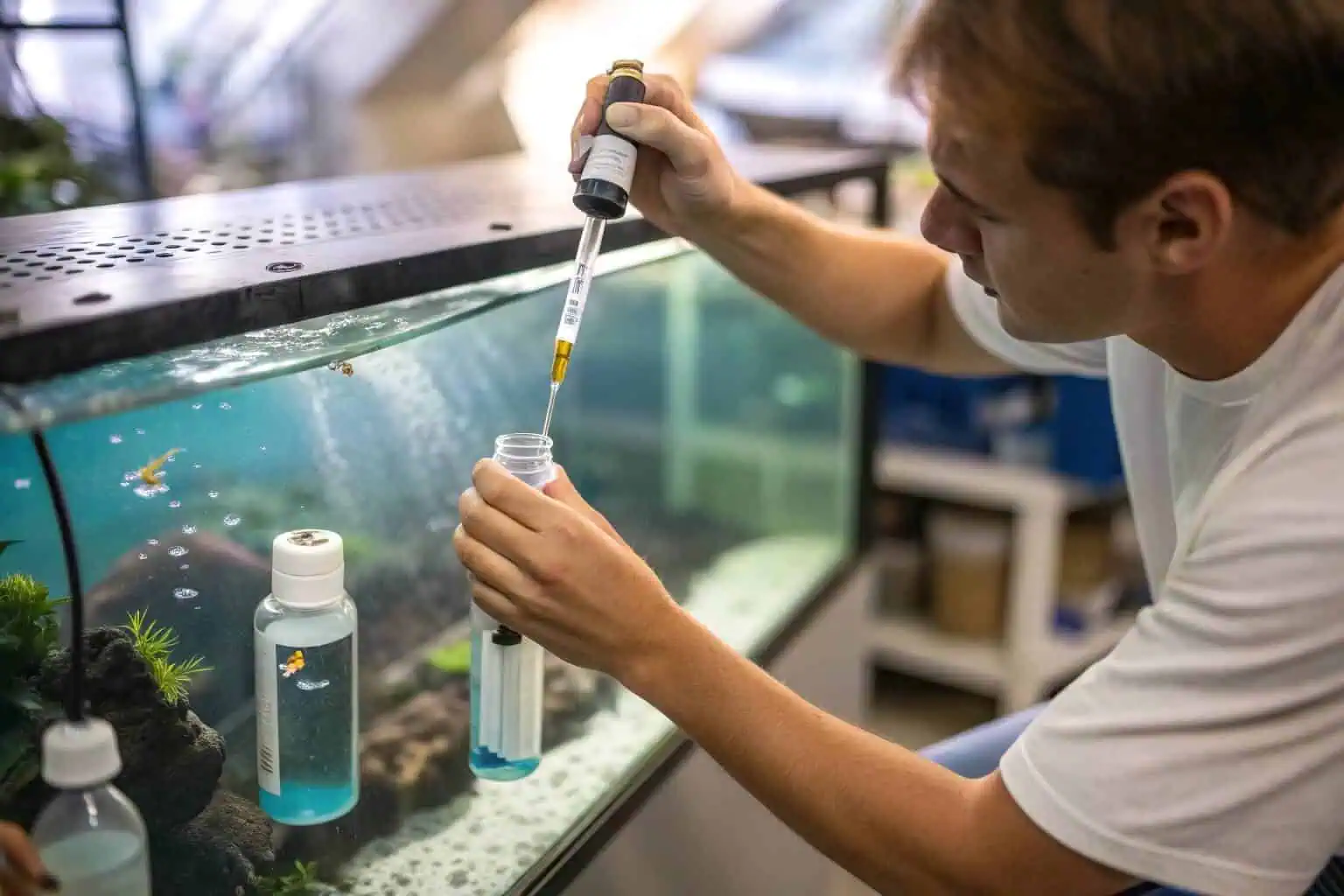How to start fish farming at a small scale?
Are you dreaming of fresh, homegrown fish but feel stuck by limited space or budget? Many people feel this way. They want a sustainable food source but think fish farming is too complex and expensive for beginners.
Yes, you can start small-scale fish farming right in your backyard. Begin by choosing a suitable container like one of our Bancy collapsible fish tanks, selecting an easy-to-raise fish species, and setting up a basic water filtration system. It's simpler and more affordable than you think.

I've always been passionate about fish farming. To me, it’s a fantastic way to use what you have to create something valuable. Whether it's a pond in the countryside or a collapsible tank on a city balcony, you can raise quality fish for your family or even earn a little extra money. I love how flexible and sustainable it is. But I also know it's not always a smooth ride. Getting started involves planning and learning. Let's walk through the key questions you probably have.
How much does it cost to start a small fish farm?
Worried that the initial investment for a fish farm will drain your savings? It's a common fear. The potential costs of tanks, feed, and fish can seem overwhelming, stopping many from even trying.
Starting a small fish farm can cost anywhere from a few hundred to a few thousand dollars. Key expenses include the tank (a Bancy collapsible tank is a great budget-friendly start), fish fingerlings, feed, and a simple water pump. Careful planning helps keep costs down.

When I first started, managing the startup costs was my biggest challenge. I had to think carefully about every purchase. The good news is that you can scale your spending based on your goals. You don't need a massive, high-tech setup from day one. My experience taught me to break down the costs to see where I could be smart with my money. It’s all about starting with a solid foundation1 and expanding as you go.
Breaking Down the Initial Investment
The costs can be divided into a few main categories. First is the fish tank itself. While you can dig a pond, I've found that using a collapsible tank2 is much more practical for small-scale operations. Our Bancy tanks, for example, are durable and easy to set up. We offer various types like Galvanized Pipe, Galvanized Sheet, or Plastic tanks to fit different needs and budgets. Second, you'll need to buy the fish fingerlings. The price varies by species. Third is the feed, which will be an ongoing cost. Finally, you'll need some basic equipment like a water pump and testing kits to keep the water clean and healthy for your fish. By choosing a cost-effective tank and an easy-to-manage fish species, you can keep the initial outlay surprisingly low.
| Cost Category | Nature of Cost | Key Features |
|---|---|---|
| Fish tank itself3 | Initial | Collapsible (e.g., Bancy tanks); durable, easy to set up; types include Galvanized Pipe, Galvanized Sheet, Plastic (fits varied needs/budgets) |
| Fish fingerlings4 | Initial | Species-dependent pricing; foundational for stock |
| Feed | Ongoing | Recurring expense; essential for fish growth and health |
| Basic equipment | Initial | Includes water pump (circulation) and testing kits (monitors water quality for fish health) |
Ongoing Expenses to Consider
Beyond the setup, you have to plan for running costs. Fish feed is the most significant one. The amount you need depends on how many fish you have and how fast you want them to grow. Electricity for the water pump is another regular expense, though usually not a large one for a small system. You should also set aside a small budget for water quality management5, like testing kits or water conditioners. I learned early on that keeping track of these small costs helps you see the real financial picture and ensures your little farm stays healthy and productive without unexpected financial stress.
Is small-scale fish farming profitable?
Are you wondering if your small fish farm can actually make money? Many people doubt if a small operation can generate real income, fearing the effort won't pay off financially.
Yes, small-scale fish farming can be profitable. Success depends on low startup costs, efficient management, and a direct sales channel. Selling fresh, locally-raised fish to your community can create a steady and rewarding income stream.

I've seen firsthand that making a profit is possible, but it requires a business mindset6. It's not just about raising fish; it's about raising them efficiently and finding people who want to buy them. The market competition is real, so I had to find a reliable way to sell my fish to make sure my hard work paid off. It’s about connecting the dots from the tank to the table.
Paths to Profitability
There are a few ways to make your small farm profitable. The most direct way is selling your fish7 to local consumers, restaurants, or at farmers' markets. People love fresh, locally sourced food and are often willing to pay a premium for it. Another approach is to specialize in a high-value species that commands a better price. You could also sell fingerlings to other aspiring fish farmers. At Bancy, we help our customers by providing highly customizable tanks, which allows them to tailor their setup to a specific, profitable niche. For example, a custom-sized tank might be perfect for raising ornamental fish, which can be very lucrative.
| Profitability Method | Description | Key Advantage |
|---|---|---|
| Selling fish to local channels8 | Sell to local consumers, restaurants, or farmers' markets | People value fresh, locally sourced food and pay premiums |
| Specializing in high-value species9 | Focus on raising species that command better prices | Higher price point for the product |
| Selling fingerlings to other farmers | Sell fingerlings to aspiring fish farmers | Expands customer base to fellow farmers |
| Using customizable tanks for niches | Use Bancy's highly customizable tanks to tailor setup (e.g., raising ornamental fish) | Customization fits specific profitable niches; ornamental fish can be lucrative |
Key Factors for Financial Success
To ensure profitability, you need to control your costs and maximize your output10. This means choosing the right feed, preventing diseases, and maintaining optimal water quality to ensure a high survival rate and fast growth. It's also crucial to have a solid sales plan before you even start. I learned to talk to potential buyers early on to understand what they were looking for. Building relationships within your community is key. A small, well-managed farm that produces high-quality fish will always find its market. It’s a rewarding feeling when your passion project starts paying for itself and then some.
What is the easiest fish to farm?
Feeling overwhelmed by the sheer number of fish species you could raise? Choosing the wrong one can lead to frustration and failure, especially when you're just starting out and need a win.
Tilapia is widely considered one of the easiest fish to farm for beginners. They are hardy, grow quickly, tolerate a wide range of water conditions, and have a simple, plant-based diet. This makes them a forgiving and low-cost choice.

When I was starting, picking the right fish felt like a huge decision. I needed something that wouldn't die on me if I made a few mistakes. That's why I often recommend Tilapia to newcomers. Their resilience11 gives you a buffer as you learn the ropes of water management and feeding schedules. It builds your confidence and sets you up for success.
Top Fish Choices for Beginners
While Tilapia is a top contender, there are other great options for small-scale farming12. Catfish are another excellent choice because they are incredibly tough and can thrive in crowded conditions. They also grow fast and are popular in many markets. For those in cooler climates, trout can be a good option, although they require cleaner, cooler water. Here’s a quick comparison:
| Fish Species | Hardiness | Growth Rate | Diet | Water Requirements |
|---|---|---|---|---|
| Tilapia | Very High | Fast | Omnivorous (plant-based)13 | Warm, wide tolerance |
| Catfish | Very High | Fast | Omnivorous | Tolerates lower oxygen14 |
| Trout | Moderate | Moderate | Carnivorous | Cool, clean, high oxygen |
| Carp | High | Moderate | Omnivorous | Wide tolerance |
Matching the Fish to Your System
Your choice of fish should also depend on your system. For a simple backyard tank, like our Bancy collapsible plastic or galvanized pipe tanks, Tilapia15 and Catfish are perfect. They don't require complex filtration systems. If you're aiming for a more integrated system like aquaponics, where fish waste fertilizes plants, Tilapia is again a star player because their waste is rich in nutrients. The key is to match the needs of the fish with the environment you can realistically provide. Starting with an easy species makes the learning curve much gentler and the entire experience more enjoyable.
What is the major problem in fish farming?
Are you worried about the hidden challenges that could sink your fish farming dreams? Every farmer faces obstacles, and knowing them beforehand can mean the difference between success and a costly failure.
The single biggest problem in fish farming is maintaining water quality. Poor water quality leads to stress, disease, and ultimately, fish death. Constant monitoring and management of parameters like ammonia, nitrites, and oxygen levels are absolutely critical for success.

I can't stress this enough: water is everything. In my early days, I faced challenges with fish getting sick, and it almost always came back to a problem with the water. It was a tough lesson, but it taught me that proactive water management16 is the most important job of a fish farmer. It requires constant learning and attention to detail, but it's a skill you can master.
The Silent Killer: Poor Water Quality
Fish live, eat, and breathe in their water. Their waste produces ammonia, which is toxic. In a healthy system, beneficial bacteria convert that ammonia into less harmful nitrates. But if this cycle breaks down, ammonia levels17 can spike and kill your entire stock. This is why regular water testing18 is non-negotiable. You need to keep an eye on pH, ammonia, nitrite, and nitrate levels. It sounds technical, but with a simple testing kit and a regular schedule, it becomes a straightforward routine. A good filtration system and regular partial water changes are your best tools to keep the water pristine.
Disease Prevention and Management
Disease is often a symptom of poor water quality19. Stressed fish are more susceptible to infections. The best defense is a good offense: keep the water clean, avoid overcrowding your tank, and provide high-quality feed. It's also wise to quarantine any new fish before introducing them to your main tank to prevent bringing in pathogens. Despite my best efforts, I've had to deal with sick fish. Having a plan, which includes knowing a local aquaculture expert20 or veterinarian you can call, is crucial. Recognizing the early signs of disease, like lethargy or spots on the skin, allows you to act quickly and save your stock.
Conclusion
Starting a small-scale fish farm is an achievable and rewarding journey. With the right knowledge and tools, like our reliable Bancy tanks, you can overcome the challenges and build a successful operation.
-
Exploring the significance of a solid foundation can guide you in building a sustainable and successful business. ↩
-
Explore the advantages of collapsible tanks for fish farming, including practicality and cost-effectiveness. ↩
-
Explore this link to discover various fish tank options that suit different needs and budgets. ↩
-
Learn about selecting the best fish fingerlings to ensure a successful aquaculture venture. ↩
-
This resource provides essential tips and techniques for maintaining optimal water quality, crucial for the success of your fish farming. ↩
-
Understanding a business mindset is crucial for success; it can transform your approach to entrepreneurship and profitability. ↩
-
Explore effective strategies for selling fish locally to maximize your farm's profitability. ↩
-
Explore this link to understand how selling locally can enhance profitability and community engagement. ↩
-
Discover insights on maximizing profits by focusing on high-value fish species. ↩
-
Explore strategies to enhance productivity and efficiency in farming, ensuring better profitability. ↩
-
Understanding fish resilience can significantly improve your aquaculture practices and boost your confidence in fish farming. ↩
-
Exploring this link will provide insights into the advantages and practices of small-scale farming, enhancing your understanding of sustainable agriculture. ↩
-
Exploring this link will provide insights into the advantages of an omnivorous diet, especially for species like Tilapia. ↩
-
This resource will help you understand which fish can thrive in challenging conditions, like Catfish in low oxygen. ↩
-
Explore the advantages of Tilapia in aquaponics, including their nutrient-rich waste and ease of care. ↩
-
Understanding proactive water management can significantly improve fish health and farm productivity. ↩
-
Understanding ammonia levels is crucial for maintaining a healthy aquarium. Explore this link to learn how to manage and prevent ammonia spikes. ↩
-
Regular water testing is vital for fish health. Discover best practices and tips for effective water testing to ensure a thriving aquatic environment. ↩
-
Understanding the impact of water quality on fish health can help you maintain a healthier aquarium. ↩
-
Consulting an aquaculture expert can provide valuable insights and solutions for managing fish diseases effectively. ↩